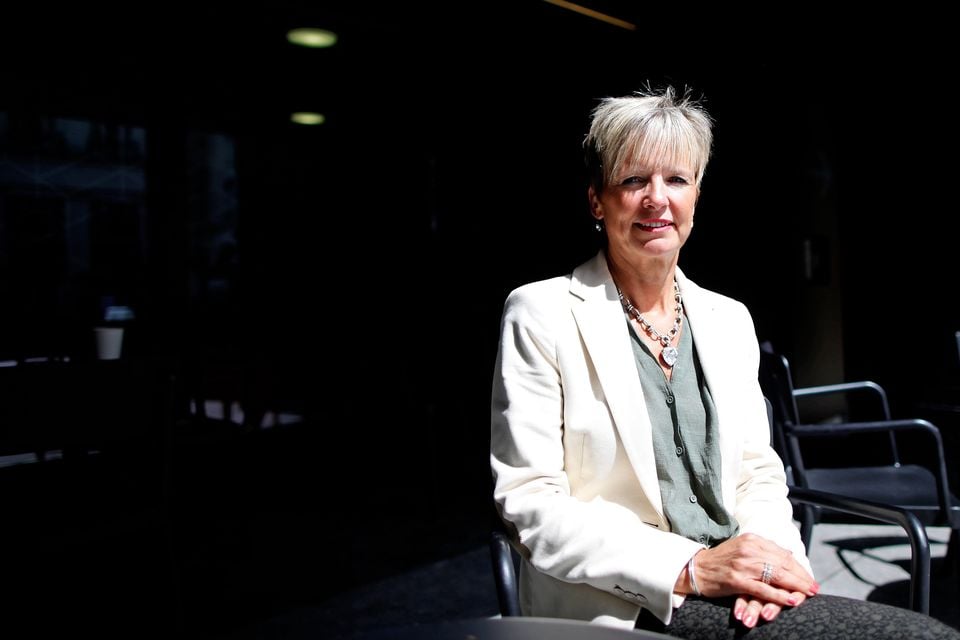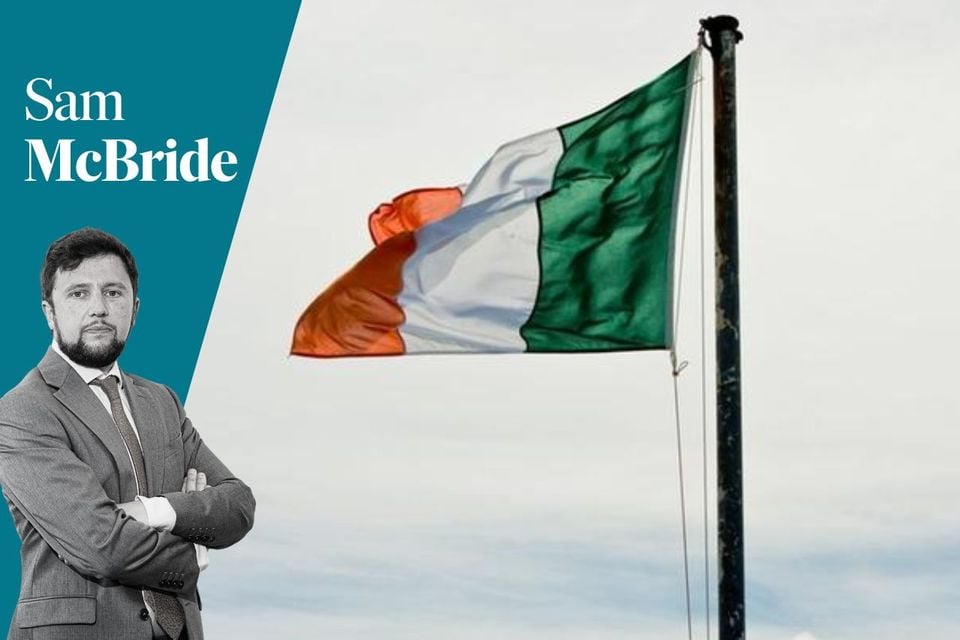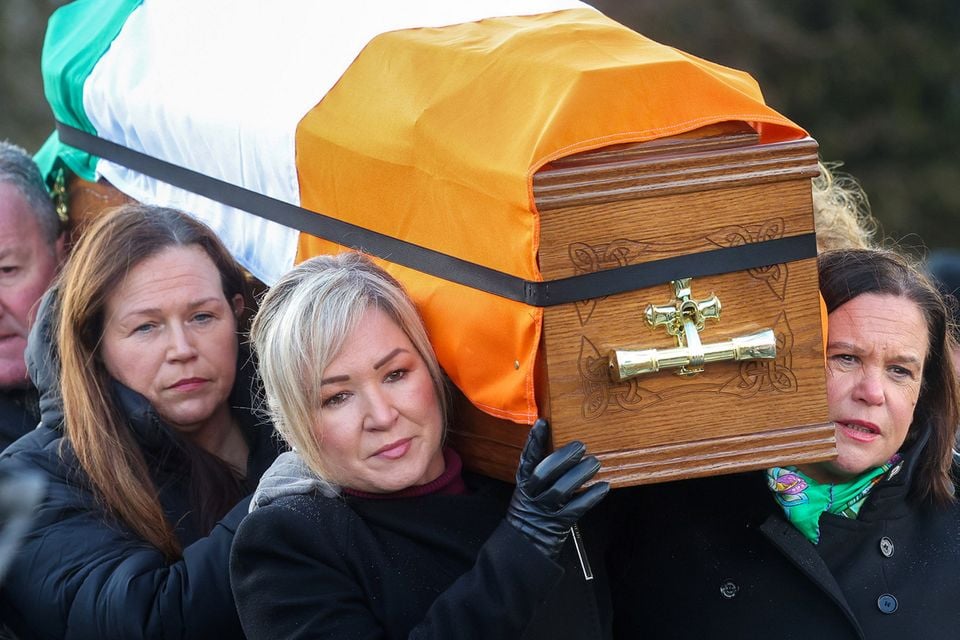Unionists will never accept the Tricolour as their flag in a united Ireland
Posted by Jim on January 12, 2025
And that’s not just the view of hardliners, but fact most people in the Republic are unlikely to budge over the issue is yet another barrier to change



Sam McBride
Today at 02:38
“You can’t eat a flag” is one of the most brilliantly succinct summations of a political philosophy — and if John Hume’s telling was correct, it was a piece of instinctive fatherly advice rather than the product of spin doctors or focus groups.
Those five words convey a simple truth: neither tribalism nor patriotism put food on anyone’s table. And yet rarely is the truth quite as simple as a slogan suggests.
Flags — or rather, what they represent — feed many people. Armies which fight beneath flags enable conquest or defence from conquest, the grabbing of far-off riches, the protection of trade routes, and ultimately much of the food which ends up on tables in countries where we can philosophically debate (or write newspaper columns about) this in peace.
There are few people for whom the sight of their nation’s flag evokes no emotion whatsoever. Most people feel at least some sense of pride or belonging when seeing their flag; if not when seeing it emblazoned on a T-shirt, then certainly when seeing it on a national hero’s coffin or waved jubilantly at some sporting triumph.
Flags symbolise nations. They encapsulate identity. They are designed to include the native by excluding the foreigner. In doing so, a shared flag builds a sense of unity among those who live beneath it. These strips of coloured cloth can be powerful motifs for far deeper realities.
Gillespie spent five years as PSNI Deputy Chief Constable until retiring in 2014 and then became a founding member of the Policing Authority, which oversees An Garda Síochána. Recently she told the Royal Irish Academy that on her first day in the job saw a Tricolour in the corner of the room “and I had this almost visceral reaction in my stomach”.
She said it was an “in the pit of my stomach reaction — not something I actively thought about… I wish I could explain it; I don’t know why it happened”.
Asked to elaborate, she said it was “something I had no control over”. She grew up on the Catholic side of a sectarian interface in north Belfast as the daughter of a Protestant cleric known for his peace-building work.
Gillespie said: “My family didn’t tell me that the Tricolour stood for something negative; it’s just that in my upbringing the Union Flag was seen as the flag of the country that I grew up in. My parents would have watched Last Night Of The Proms, the Remembrance Service from the Royal Albert Hall, we would have watched the Queen’s Speech…but there was never anything negative instilled in me about the Irish Tricolour.”
Yet, just seeing the flag led to “an almost physical reaction”. Gillespie said the rational part of her brain quickly kicked in, telling her to “wise up” and “get over yourself” — this is the flag of the Republic whose government had appointed her to a role in which she was to serve the community by utilising her skills.
This is a rare and revelatory glimpse into the deepest reaches of what many unionists in Northern Ireland think. There are plenty of unionists who will openly express derision for the Tricolour, seeing it as the flag of the IRA, and some who will unrepentantly burn it on Eleventh Night bonfires. But, almost invariably, those are hardliners.
Gillespie couldn’t be further removed from their worldview. She espouses moderate political views. She embraced the change of the RUC to the PSNI, even to the extent of learning the Irish language. She worked with Sinn Féin on the Policing Board and was the target of smears from some loyalists for doing so.
If someone with that background, who is demonstrably neither small minded nor a bigot, reacts thus to the Tricolour, it demonstrates the impossibility of persuading almost any Northern Irish unionist this flag could ever be theirs in a united Ireland.
Many unionists will show respect for the Tricolour as the emblem of a foreign nation with whom they have good relations.
But such politeness shouldn’t be misinterpreted as seeing themselves in a flag designed to unite Orange and Green.
Just as the Union Flag was meant to unite all four nations of the United Kingdom, with Ireland present in St Patrick’s Cross, such gestures of compromise only work if they are accepted by those to whom the compromise is addressed.
Outside of support for the Union itself, few issues unite unionists as much as a rejection of ever being represented by the Tricolour.
Even if they could live with some form of Irish unity, they couldn’t live with the flag.
Yet polling consistently shows southerners’ deep attachment to the flag. This illustrates how misleading high polling support for Irish unity in the south is.
There is no way the creation of a new country could be achieved without drastic compromises, many of which would be far more tangible than symbolic.
Three years ago a poll found that only one in four southerners would give up the Tricolour and one in three would give up the National Anthem. A separate survey of TDs found just 36% of them would be open to changing flag or anthem. A year later research found 30% of southerners aren’t even open to a discussion about the flag and anthem — even where any change would have to be ratified by a referendum (in which there would be a massive nationalist majority).
Last year a poll found that northern Protestants’ overwhelmingly negative views of the Tricolour remain unaltered regardless of whether a symbol of reconciliation or republicanism.
Just last week the flag was again attached to the coffin of leading IRA man Ted Howell — a stark contrast to the unadorned wicker coffin of Hume.

In some ways, these are wholly symbolic decisions which would have no practical impact on the lives of a single person. Yet they matter deeply to many people on either side of the debate — more deeply for some than questions of how much Irish unity might cost.